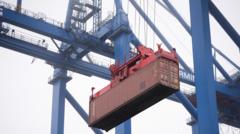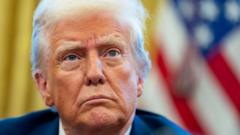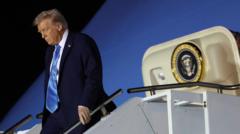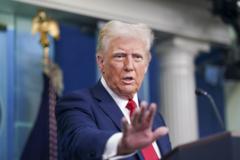The Chinese-funded Chancay megaport in Peru signals a new era of trade routes and geopolitical tension, leaving the US on the defensive as it reassesses its influence in Latin America.
**China's New Megaport in Peru Heightens US Concerns Over Latin American Influence**

**China's New Megaport in Peru Heightens US Concerns Over Latin American Influence**
Peru's Chancay port, backed by China, promises significant trade shifts, drawing US scrutiny as geopolitical dynamics evolve.
China has marked a significant milestone in its economic ambitions in Latin America with the inauguration of the Chancay megaport on Peru's coast, attended by President Xi Jinping. This $3.5 billion venture, developed by China's state-owned Cosco Shipping, transforms a modest fishing town into a crucial logistical hub for trade across the Pacific, establishing direct links to Asian markets.
As the region braces for a potentially redefined geopolitical landscape, the US is strategically reassessing its role while the incoming Trump administration hints at a tougher stance on China. Trump's recent election campaign teased high tariffs on Chinese imports, prompting questions about America’s future economic engagements with Latin America, traditionally viewed as its domain.
The Chancay port is designed to facilitate faster shipping times, enabling goods from neighboring countries such as Brazil and Chile to reach markets in China more efficiently. As an added layer of concern, US military officials have raised alarms that the port could be used for more than commercial operations, suggesting it might serve dual-purpose roles that could fit military needs, akin to a strategic pivot for the People's Liberation Army.
China's increasing presence in a region previously dominated by the US is evident, sparking criticism about America's historical indifference towards Latin American nations. Experts argue that this power shift underscores the need for the US to enhance engagement and cooperation mechanisms in the region to fend off Chinese influence.
While US authorities voiced concerns over the implications of such Chinese infrastructure projects, many Latin American countries see aligned interests with Beijing, prompting a recalibration of previous hesitations towards Chinese investments. The region is keenly aware of its leverage, navigating both powerhouses to secure favorable terms without choosing sides outright.
As discussions continue in the wake of the Asia-Pacific Economic Cooperation (APEC) summit, the balance between American and Chinese influence remains delicate, with significant implications for trade relationships and regional stability. Future negotiations surrounding existing free trade agreements will be closely monitored by South American states, whose economic destinies increasingly intertwine with these two superpowers.






















